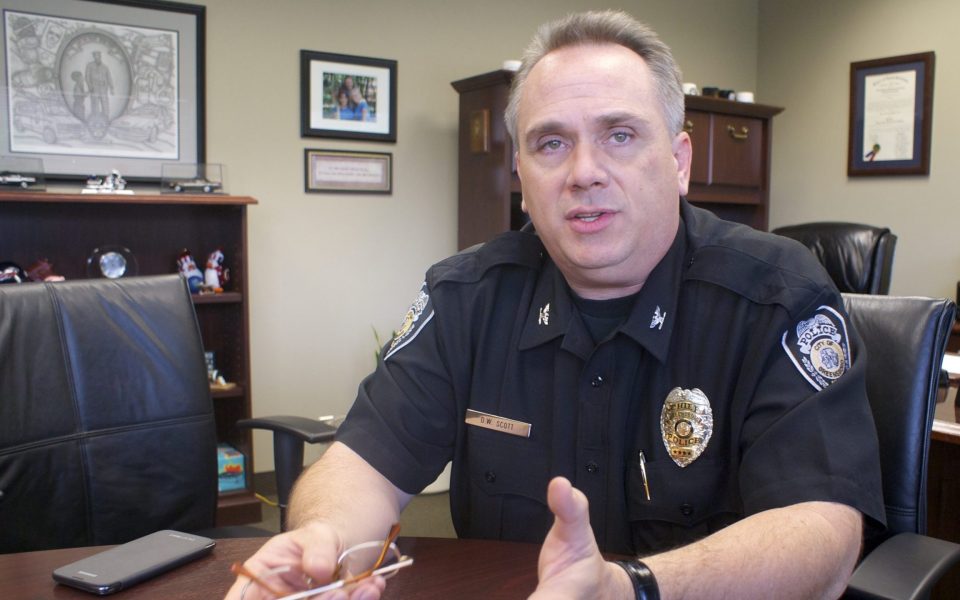Last week Greensboro police Chief Wayne Scott resigned from the position he’s held since March 2014, and the police force of which he’s been a part since 1991, when he was 21 years old.
Five years is a pretty good run for a police chief in the current climate — the days of long-serving chiefs like Sylvester Daughtry, who served from 1987 to ’98, or William Swing, 1975 to ’84, are gone forever.
Remember that the 1979 Greensboro Massacre happened on Swing’s watch. Daughtry was the city’s first black police chief, followed by the second, Robert White. And the department’s racial tensions that festered under their administrations surfaced in spectacular fashion during the tenure of David Wray, who came next.
It’s impossible to understand Scott’s role as chief without touching upon the David Wray mess. Younger and newer residents of the city might be surprised to learn that a years-long scandal enveloped the GPD, one that saw a white administration investigating black members of the force, a Black Book, the forced resignation of the police chief and, later, the city manager. Later still there would be a show trial that steered the thing into the ground.
These were dark times in the department, with public trust lower than it’s been at any time this century. Wray’s successor, Tim Bellamy, was a five-year placeholder, charged with ensuring that all the bad people were gone, and then Ken Miller came in for a restructuring before Scott rose to the position in 2014.
Scott was the safe choice, a 23-year veteran of the force who made sergeant under Chief White, had served in the motorcycle division and bike patrol, got promoted to lieutenant and then captain by Bellamy and became a deputy chief under Miller.
Wray was the only chief who never promoted him.
Scott, with a couple masters degrees under his belt, was supposed to be the intellectual, rational presence on the force. History had different plans.
Scott made the New York Times in 2015, in a piece that noted that black drivers get pulled over more than whites (TCB’s Eric Ginsburg contributed reporting to the story). In 2016 he presided over one of the first releases of body-camera video in the footage that showed a Greensboro officer killing Chieu Di Thi Vo, who was mentally handicapped. He also brought out video of a GPD officer roughing up Dejuan Yourse while Yourse sat on his mother’s porch. In 2017, there was Jose Charles, a 14-year-old who was beaten by Greensboro police during the Fun Fourth Festival the previous year. And then there was the 2018 death of Marcus Smith, who died while hog-tied in police custody, all of it captured in excruciating detail in footage released to the public.
A police chief often gets judged by his worst failures. But this much is true: Scott has been the longest-serving chief this century. And compared to his predecessors in that timeframe, he’s the best of the lot.
Join the First Amendment Society, a membership that goes directly to funding TCB‘s newsroom.
We believe that reporting can save the world.
The TCB First Amendment Society recognizes the vital role of a free, unfettered press with a bundling of local experiences designed to build community, and unique engagements with our newsroom that will help you understand, and shape, local journalism’s critical role in uplifting the people in our cities.
All revenue goes directly into the newsroom as reporters’ salaries and freelance commissions.


You’re a really dumb guy. How are you employed at a paper?
It helps to be majority owner!